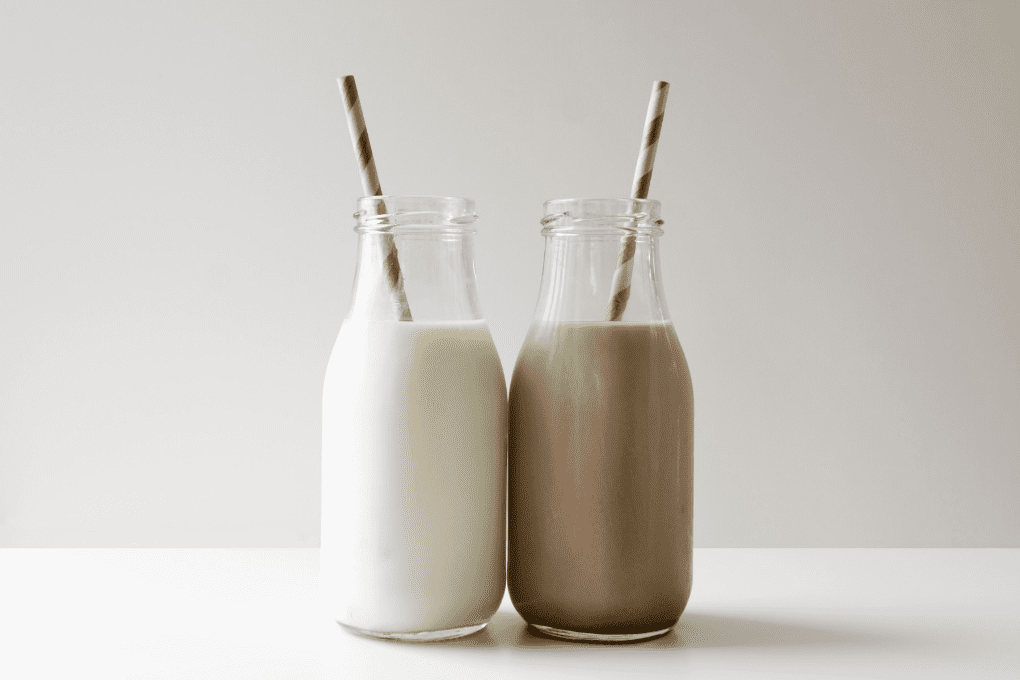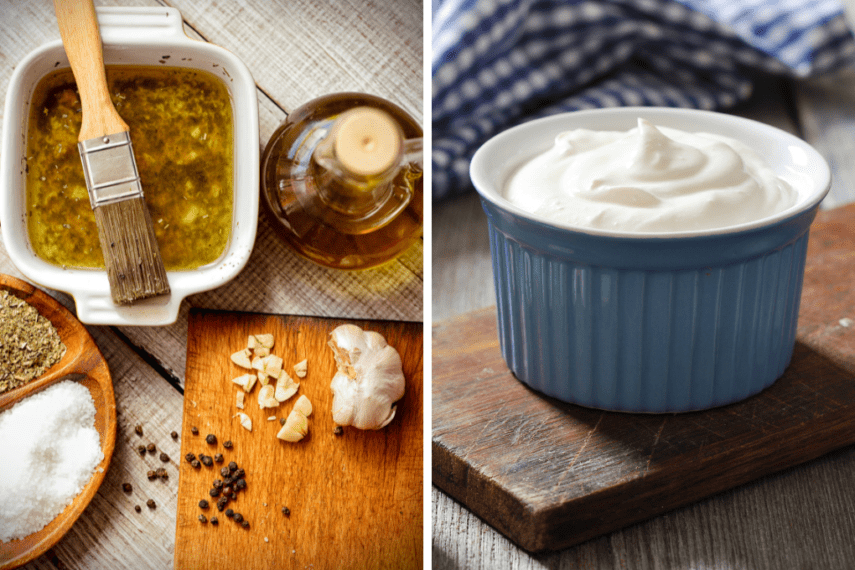
Dietitians working in sports nutrition know that chocolate milk has an optimal ratio of carbohydrate to protein, which makes for a balanced post-exercise snack. But what about white milk?
In this blog post, you’ll learn about:
- The nutrient differences between white and chocolate milk.
- Why chocolate milk alone works for recovery.
- How to use white milk for recovery.
Chocolate vs. White Milk: What’s the Nutritional Difference?
White cow’s milk contains nutrients required for muscle growth and exercise recovery, which includes:
- High-quality protein: This is due to milk being an animal protein and containing high levels of the branched-chain amino acid leucine.
- Carbohydrates: The natural milk sugar (lactose) provides carbohydrates to help replenish muscle glycogen, or the fuel stored within muscles that is used for exercise,
- Fluid: For optimal rehydration after exercise, researchers suggest drinking 1.5-times as much fluid as was lost. Adding sodium helps the body retain fluid and reduces urinary output.
- Electrolytes: Sodium and potassium are lost through sweat and need to be consumed after exercising.
Although white and chocolate milk have similar amounts of protein, fluid, and electrolytes, the addition of sugar to chocolate milk increases the amount of calories and carbohydrates.
| Type of Milk (per 8-oz. cup) | Calories (kcal) | Protein (grams)* | Carbohydrate (grams) |
|---|---|---|---|
| Low-fat Chocolate Milk | 190 | 7.5 | 30.3 |
| Low-fat White Milk | 105 | 8.5 | 12.2 |
*The difference in protein is due to the added sugar in chocolate milk. The 8-ounce volume remains the same, so if sugar is added then the quantities of the other nutrients are reduced.
Chocolate Milk for Recovery
After exercising, consuming protein and carbohydrate promotes muscle growth and recovery. The combo also prepares an athlete for the next sweat session by refilling muscle glycogen stores. Sports dietitians currently recommended post-exercise snacks or meals to contain 15-25 grams of protein and 40-60 grams of carbohydrate.
The added sugars in chocolate milk provide the boost in carbohydrates and calories that white milk does not have. So if you’re going on a run and finish near a convenience store, choosing chocolate milk made from cow’s milk can be a complete recovery snack.
Using White Milk in Your Recovery Plan
Recovery nutrition need not be limited to one beverage. Snacks and meals can contain a variety of ingredients that when taken together create balance.
Examples of balanced options include:
- A smoothie made from banana, peanut butter, and white milk.
- A bowl of overnight oats made with yogurt and served with fruit.
What Should I Choose: White or Chocolate Milk?
Either milk works fine. Choose whichever option you enjoy, makes you feel good, and digests well after exercising.
If opting for white milk, yogurt, or cottage cheese, you may need to add a banana, crackers, or other high-carbohydrate option to create balance.



